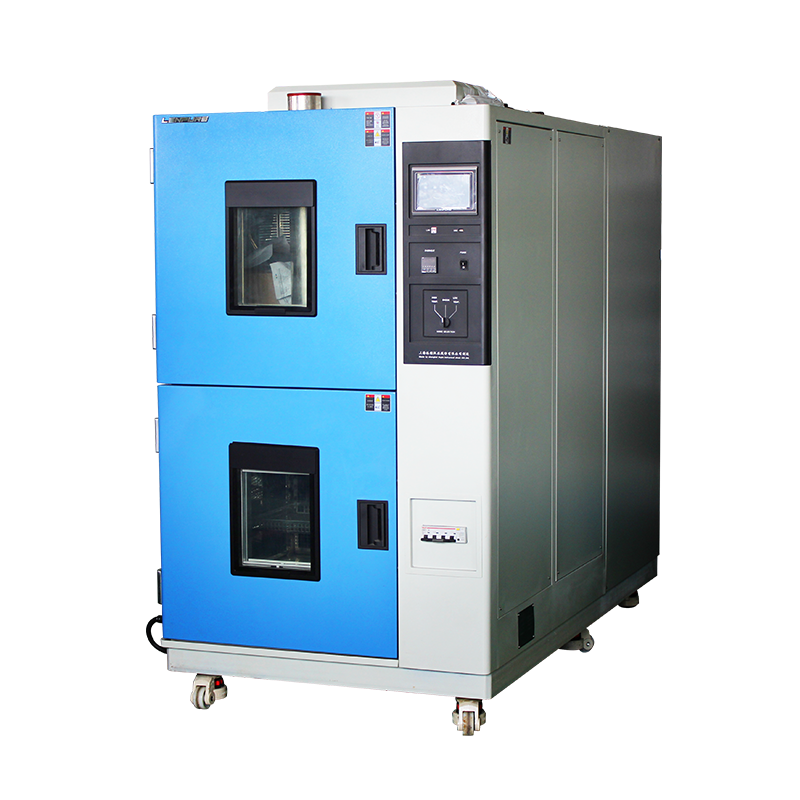

Cold and hot shock test chambers utilize high-temperature and low-temperature zones during testing. In the testing process, two-box models involve placing the test product in high and low-temperature zones for cyclic exposure, while three-box models involve blowing high- and low-temperature gases onto the product alternately.
However, the purpose of cold and hot shock test chambers varies at different stages of product development.
During the engineering research and development phase, the chamber can be used for product design and to address deficiencies in processes. When the product is finalized, the chamber can serve as a reference for acceptance decisions. During environmental stress screening, it can be used to eliminate products with early failures. This categorizes the specific purposes of the testing equipment.

When selecting a test chamber, both two-box and three-box models can be used for testing. So, how should you choose the model?
Understand Your Product’s Temperature Range: Before selecting a model, clearly define the temperature range your product will be tested under. When choosing the model, it’s advisable to leave a temperature buffer of about 10°C to account for any temperature differences in the equipment.
Specify the Testing Standards: Inform the manufacturer of the specific conditions and standards your chosen model must meet. Different standards may have varying temperature requirements.
Provide Details About the Test Samples: When confirming the model, inform the manufacturer about specific details of the samples to be tested, such as whether they will be under load, if they generate heat, and their dimensions.
Clarify the Duration of Temperature Exposure: Typically, the duration of high and low-temperature exposure is over 30 minutes. If your product requires a different duration or has specific needs, inform the manufacturer in advance.
Cold and hot shock test chambers have superior temperature change capabilities compared to other instruments with similar functions. When selecting a model, the general requirements are usually temperature testing, product size, and shock testing. As long as you understand your product and clearly communicate your needs to the manufacturer, you will be able to select the appropriate equipment.